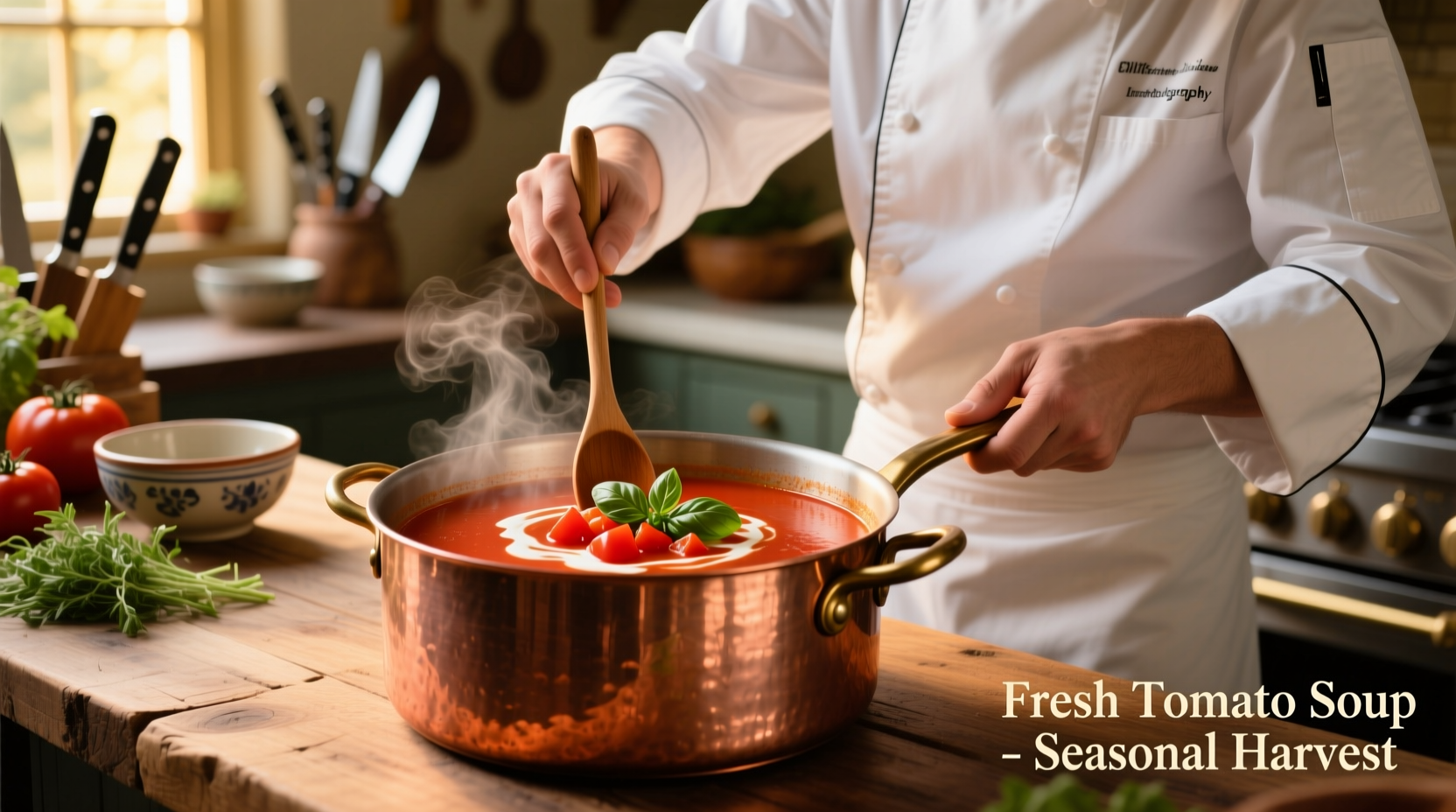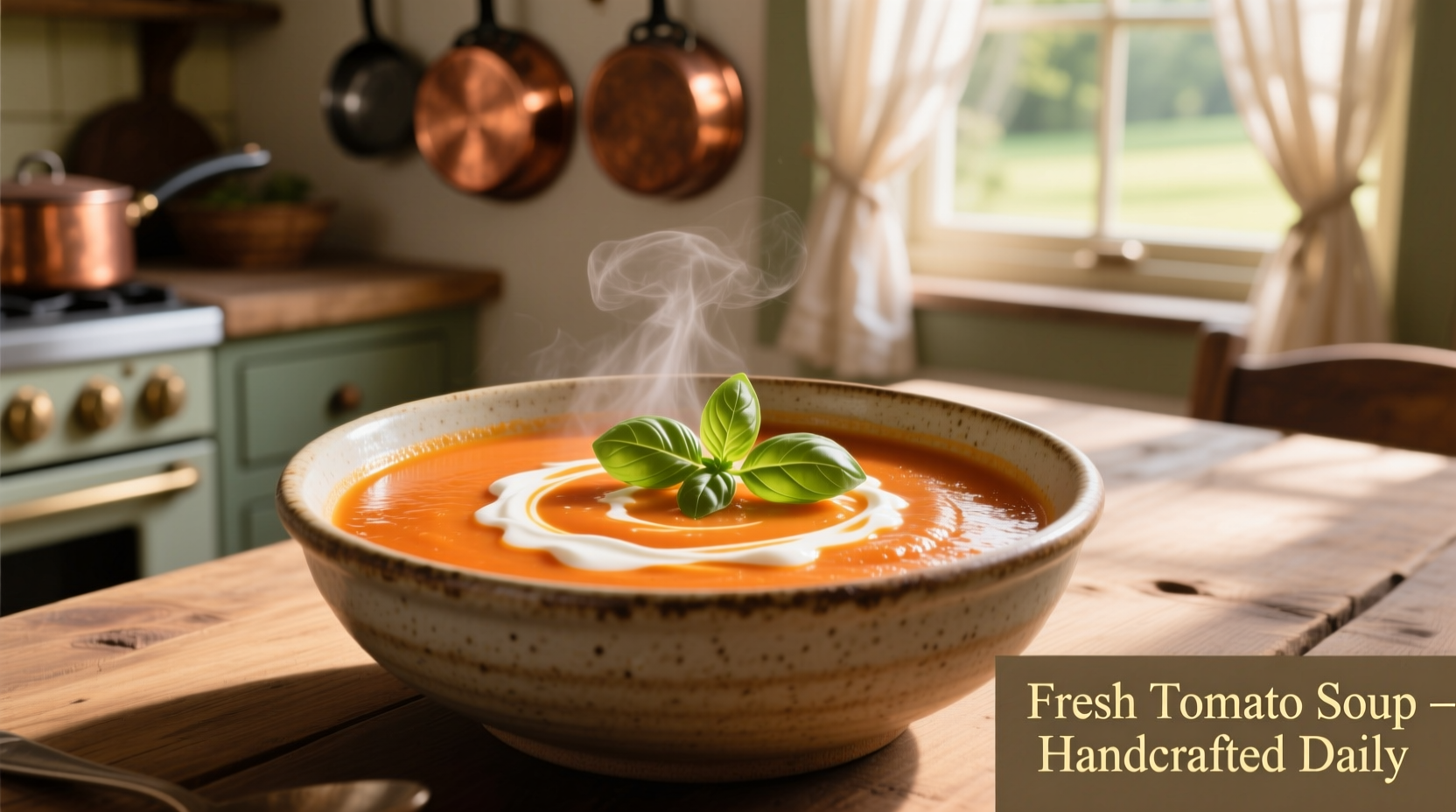The Secret to Superior Fresh Tomato Soup
When you make cream of fresh tomato soup from scratch, you're not just creating a meal—you're capturing summer's peak flavor in a bowl. Unlike canned alternatives, fresh tomato soup delivers vibrant acidity, natural sweetness, and nuanced herbal notes that transform this classic comfort food into something extraordinary.
Why Fresh Tomatoes Outperform Canned (The Science)
Fresh tomatoes contain higher levels of volatile flavor compounds that degrade during canning. According to USDA nutritional data, vine-ripened tomatoes have 20% more lycopene and significantly higher vitamin C content than their canned counterparts. The difference becomes especially apparent when making homemade cream of tomato soup using garden tomatoes.
| Characteristic | Fresh Tomato Soup | Canned Tomato Soup |
|---|---|---|
| Flavor Complexity | Rich, layered notes with natural sweetness | Flattened, one-dimensional profile |
| Nutritional Value | Higher vitamin C and lycopene bioavailability | Reduced nutrients due to heat processing |
| Sodium Content | Controllable (typically 50-75% less) | Often 600-800mg per serving |
| Texture | Smooth yet vibrant mouthfeel | Can be overly thick or watery |
Tomato Selection: Your Flavor Foundation
Not all tomatoes work equally well for easy fresh tomato soup with heavy cream. Roma tomatoes provide ideal thickness with lower water content, while heirloom varieties like Brandywine add complex sweetness. For the best results, use tomatoes at peak ripeness—slightly soft to the touch with deep, uniform color. Avoid refrigeration, which destroys flavor compounds; store at room temperature until ready to use.

Essential Equipment Checklist
Professional results require the right tools:
- Heavy-bottomed pot (stainless steel or enameled cast iron)
- Immersion blender or high-speed countertop blender
- Food mill or fine-mesh strainer
- Wooden spoon (metal can react with tomato acidity)
Step-by-Step Preparation Guide
Tomato Preparation Techniques
Blanching tomatoes in boiling water for 30 seconds, then transferring to ice water, creates the perfect conditions for easy peeling while preserving flavor compounds. For thick and creamy fresh tomato soup recipe, remove seeds using a spoon—they contain excess moisture that dilutes flavor.
Cooking Process: Maximizing Flavor Extraction
The secret to restaurant-quality cream of fresh tomato soup lies in controlled caramelization. Cook tomatoes with onions and garlic over medium-low heat for 25-30 minutes—never boiling—to develop complex flavor compounds without scorching. Add a pinch of baking soda (1/8 teaspoon per pound of tomatoes) to neutralize excess acidity while maintaining bright flavor.
Cream Integration Method
Never add cream directly to boiling soup—that causes curdling. Instead, temper the cream by gradually adding 1/2 cup of hot soup to 1 cup of cream while whisking, then incorporate back into the main pot at 165°F (just below simmering). For dairy-free version, use coconut cream following the same tempering process.
Flavor Variations Worth Trying
Elevate your healthy cream of tomato soup without canned tomatoes with these chef-approved additions:
- Herb Infusion: Add fresh basil stems during cooking (remove before blending)
- Umami Boost: 1-2 dried porcini mushrooms steeped in the broth
- Smoky Depth: 1/4 teaspoon smoked paprika (not chili powder)
- Creamy Alternative: Blend in 1/4 cup roasted red peppers for natural thickness
Storage and Reheating Best Practices
Properly stored, fresh tomato soup with cream maintains quality for 3-4 days in airtight containers. Always cool soup rapidly by placing the pot in an ice bath before refrigerating. When reheating, do so gradually over medium-low heat—never boil, as this separates the cream. For frozen storage, omit cream initially and add when reheating for optimal texture.
When Fresh Isn't Feasible: Context Boundaries
While cream of fresh tomato soup from scratch delivers superior flavor, there are situations where quality canned tomatoes make sense:
- Winter months when fresh tomatoes lack flavor
- Commercial kitchen environments requiring consistent output
- Emergency situations where fresh ingredients aren't available
In these cases, select San Marzano DOP-certified canned tomatoes for closest approximation of fresh flavor.
Perfect Pairings for Your Soup
Complete your restaurant-style fresh tomato soup recipe experience with these pairings:
- Crusty artisan bread with olive oil dip
- Simple arugula salad with lemon vinaigrette
- Grilled cheese sandwich using aged cheddar and gruyère
- Chilled rosé wine with bright acidity











 浙公网安备
33010002000092号
浙公网安备
33010002000092号 浙B2-20120091-4
浙B2-20120091-4